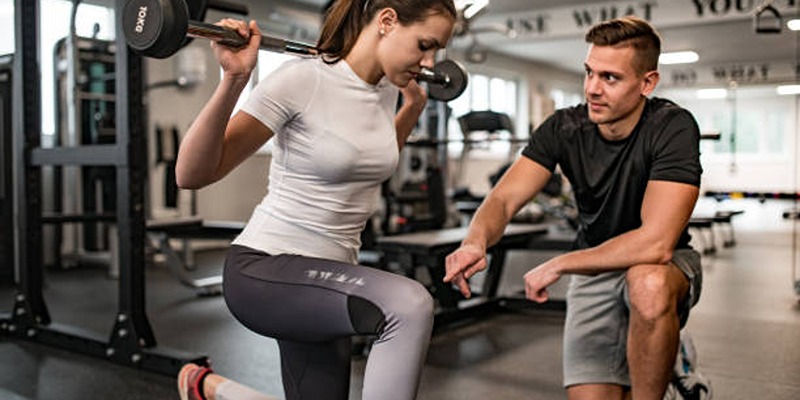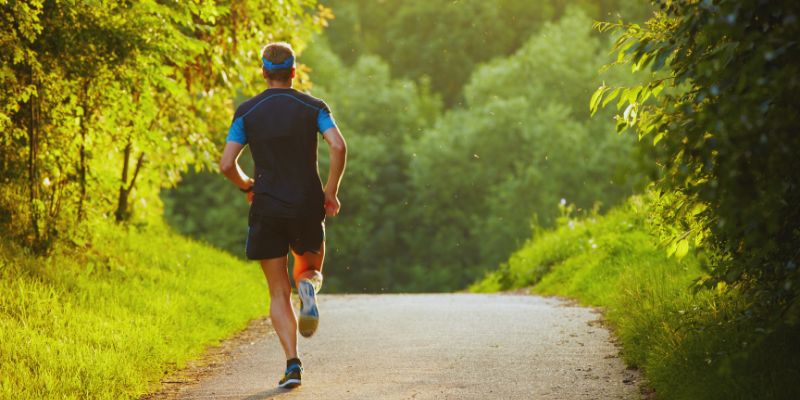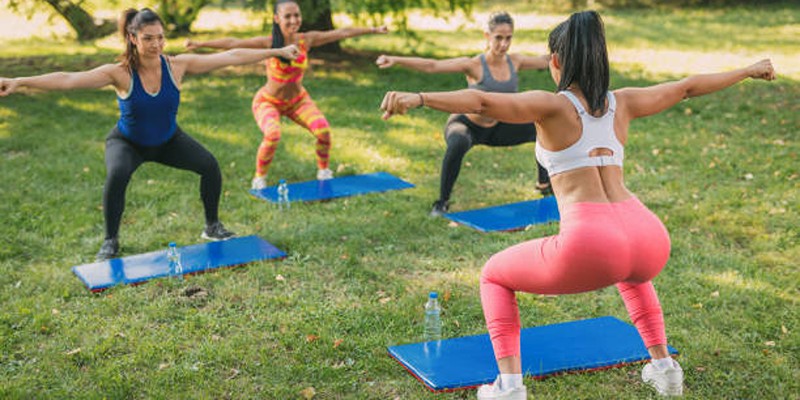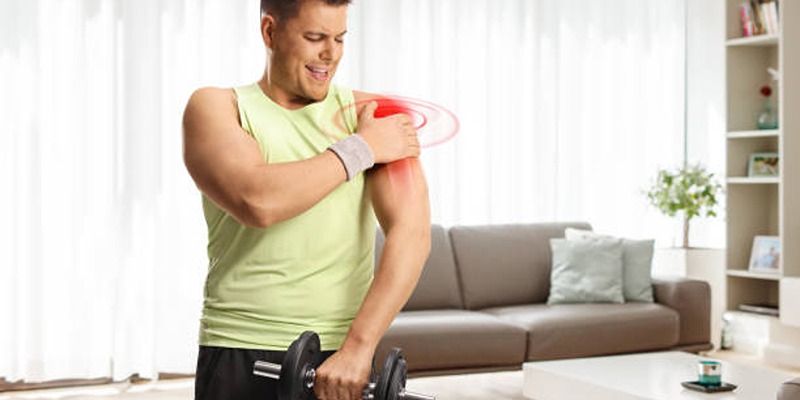Running boosts endurance, clears your mind, and keeps you fit, but it can strain your muscles and joints. Adding yoga to your post-run routine is key for recovery. It improves flexibility, soothes soreness, enhances relaxation, and sharpens focus. Whether you’re a marathoner or jogger, these eight yoga poses will help you recover effectively.
The Benefits of Yoga for Runners
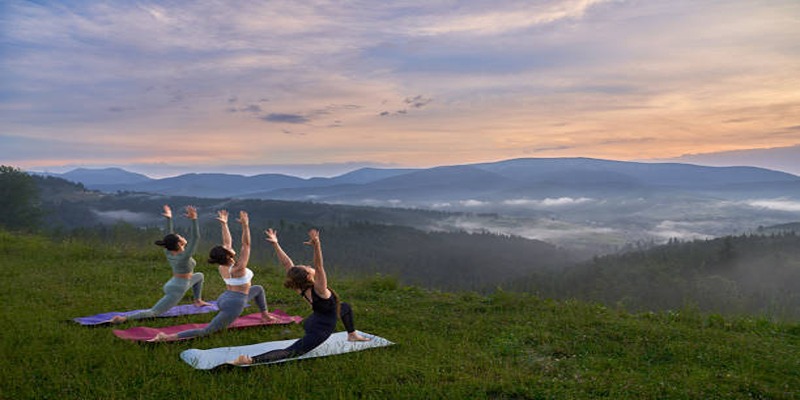
Yoga offers numerous benefits for runners, physically and mentally. Here’s how yoga can complement your running routine:
- Improved Flexibility: Running tightens muscles, especially in the legs. Yoga stretches those muscles, improving range of motion and reducing stiffness.
- Faster Recovery: Yoga boosts circulation, helping your body send oxygen-rich blood to sore muscles and promoting faster recovery.
- Reduced Injury Risk: By focusing on alignment and balance, yoga helps strengthen both major and supporting muscle groups, reducing the risk of overuse injuries.
- Mental Relaxation: Running can take a physical and mental toll. Yoga calms the mind and reduces stress, creating balance for both body and mind.
Now, roll out your yoga mat, and let's dig into the eight poses all runners should try after hitting the pavement.
1. Downward-Facing Dog (Adho Mukha Svanasana)
A runner's staple, Downward-Facing Dog is perfect for stretching the hamstrings, calves, and lower back, areas that often stiffen up after running.
How to Do It:
- Begin on all fours, keeping your hands shoulder-width apart and your knees aligned with your hips.
- Tuck your toes under and lift your hips toward the ceiling, extending your legs.
- Spread your fingers wide and press into your palms. Keep your heels reaching toward the floor (they don’t have to touch).
- Hold for 30–60 seconds, letting your hamstrings and calves stretch deeply.
Why it’s helpful: This pose lengthens the spine while improving flexibility in the back of your legs.
2. Runner’s Lunge (Anjaneyasana)
This pose mirrors the motion of running and targets the hip flexors, quads, and groin, all of which tend to tighten post-run.
How to Do It:
- Step one foot forward into a low lunge with the opposite knee resting on the mat.
- Keep your front knee stacked over your ankle, and lengthen through your back leg.
- Place your hands on your front thigh or extend them overhead for a deeper stretch.
- Hold for 20–30 seconds, then switch sides.
Why it’s helpful: By releasing tight hip flexors, this pose improves stride length and posture.
3. Child’s Pose (Balasana)
Child’s Pose is a soothing yoga position that gently stretches the lower back, hips, and thighs while promoting deep relaxation and a sense of calm.
How to Do It:
- Kneel on the floor and sit back on your heels.
- Lean your torso forward and rest your forehead on the mat.
- Stretch your arms out in front of you or rest them along your sides.
- Breathe deeply, holding for 30–60 seconds.
Why it’s helpful: This pose is restorative and helps stretch your spine, hips, and thighs while calming your mind.
4. Seated Forward Fold (Paschimottanasana)
A classic yoga pose, the Seated Forward Fold provides an excellent stretch for your hamstrings, calves, and lower back.
How to Do It:
- Sit on the mat with your legs extended straight in front of you.
- Flex your toes toward the ceiling to engage your legs.
- Reach for your feet or shins, folding from your hips while keeping your back long.
- Hold for 30–45 seconds and breathe deeply.
Why it’s helpful: Perfect for relieving post-run tightness, especially in the hamstrings.
5. Reclining Pigeon Pose (Supta Kapotasana)
The Reclining Pigeon Pose is a gentle variation of the classic Pigeon Pose, targeting your hips, glutes, and piriformis muscle.
How to Do It:
- Lie on your back with both knees bent and feet flat on the floor.
- Place your right ankle on top of your left thigh to form a figure-four shape.
- Place your hands behind your left thigh and slowly pull it toward your chest.
- Hold for 20–30 seconds, then switch sides.
Why it’s helpful: This pose provides a deep hip stretch and helps release tension in the glutes.
6. Bridge Pose (Setu Bandhasana)
Bridge Pose helps build strength in your lower back, glutes, and hamstrings while also stretching your chest and hip flexors.
How to Do It:
- Lie on your back, bend your knees, and keep your feet hip-width apart.
- Push through your feet to lift your hips toward the ceiling.
- Keep your arms by your sides, palms facing down, or clasp your hands under your back for more support.
- Hold for 20–30 seconds, then lower back down.
Why it’s helpful: This pose enhances flexibility in the front of your body and strengthens your posterior chain.
7. Supine Twist (Supta Matsyendrasana)
Perfect for restoring balance after your run, the Supine Twist stretches your lower back, hips, and shoulders while promoting spinal mobility.
How to Do It:
- Lie on your back with your legs extended.
- Bring your right knee into your chest, then drop it over to your left side.
- Extend your right arm out to the side and look toward your right hand.
- Hold for 20–30 seconds, then switch sides.
Why it’s helpful: This pose relieves tension in the spine and helps counteract the repetitive twisting motion of running.
Legs-Up-The-Wall Pose (Viparita Karani)
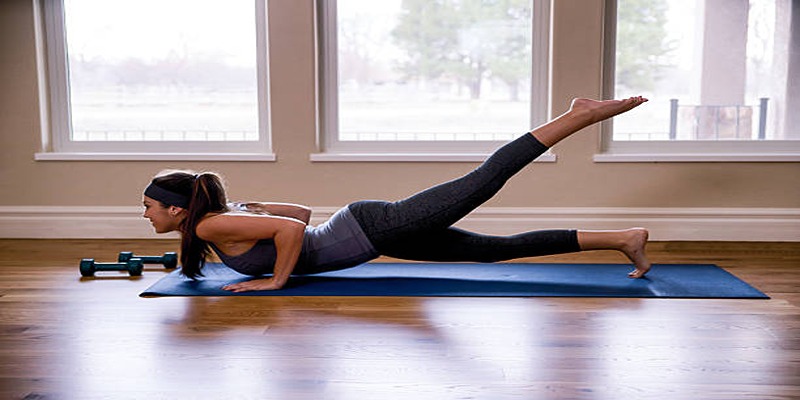
This restorative pose is perfect for the end of your yoga session, improving circulation and reducing swelling in your legs.
How to Do It:
- Sit sideways against a wall, then lie back and swing your legs up the wall.
- Adjust so that your hips are as close to the wall as is comfortable.
- Relax your arms out to the sides and breathe deeply.
- Stay here for 2–5 minutes.
Why it’s helpful: By reversing the effects of gravity, this pose alleviates fatigue and swelling in your legs.
Conclusion
Integrating yoga into your post-run routine can make a world of difference. These eight poses not only help you recover faster but also prevent injuries and improve your overall performance as a runner. Even just 10–15 minutes after your workout can leave you feeling refreshed and ready to conquer your next run. So why not give them a try and see the benefits for yourself? Remember to listen to your body and modify any pose as needed.




